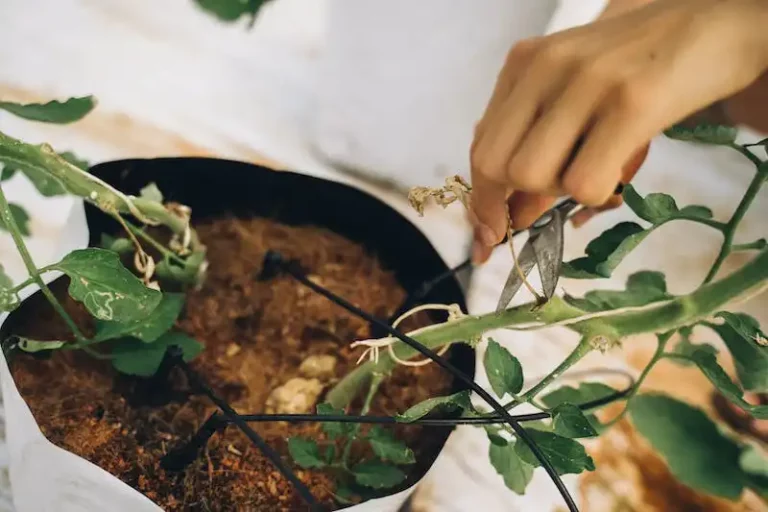The Norfolk Pine tree, also known as the Norfolk Island Pine, is a graceful evergreen tree native to the Norfolk Island, a small island located in the Southern Hemisphere near the equator. Despite its name, this tree is not a true pine, but it shares many characteristics with pine trees. Its pine-like appearance, elegant height, and delicate lacy branches make it a popular choice for both indoor and outdoor decoration during the holidays and all year round.
When it comes to caring for Norfolk Pine trees, there are a few important factors to consider. First and foremost, these trees thrive in tropical and subtropical areas, so they prefer a warm and humid environment. They do best when placed in a spot that receives bright, indirect sunlight, such as near a window.
Watering is an essential part of Norfolk Pine tree care. These trees require regular watering, especially during the warmer months. However, it is important not to overwater them, as this can lead to root rot. It is best to keep the soil slightly moist, but not too wet. As for fertilizing, it is recommended to fertilize Norfolk Pines once a month during the growing season with a balanced houseplant fertilizer.
One common issue that Norfolk Pine tree owners may face is their trees leaning to one side. This is often caused by uneven light exposure, as the tree will naturally tilt towards the light source. To solve this problem, simply rotate the tree regularly to ensure that all sides receive equal sunlight.
Overall, Norfolk Pine tree care is relatively simple and can be a rewarding experience for both experienced gardeners and beginners. With their stunning appearance and ability to thrive as houseplants, these trees have become a favorite choice for many. So, whether you decide to have a Norfolk Pine as a charming tiny Christmas tree or as an elegant houseplant, you can be sure to enjoy the beauty they bring to any space.
Scientists Just Solved The Strange Case of Pine Trees That Always Lean Towards The Equator
Scientists have recently made a breakthrough discovery surrounding the mysterious leaning tendencies of pine trees. These majestic evergreen trees, known for their lacy appearance and graceful branches, have long puzzled botanists and nature enthusiasts alike.
Norfolk Pine trees, in particular, have earned their name due to their common leaning towards the equator. Whether grown outdoors in tropical areas or used as houseplants, Norfolk Pines always seem to have a slight lean towards the sun. This peculiar characteristic has fascinated individuals for years.
Thanks to the wisdom of botanical researchers, the reason behind their leanings has finally been solved. It turns out that the leaning is not a result of the tree’s growth pattern or a genetic defect. Instead, it is a response to their environment and an adaptive mechanism that allows them to thrive in specific conditions near the equator.
When Norfolk Pine trees are grown outdoors in direct sunlight, their need for brightness and warmth makes them lean towards the equator. This ensures that they receive the maximum amount of sunlight, which is essential for their growth and survival. In areas where frost is a common occurrence, the lean helps protect the delicate branches and leaves from cold damage.
As houseplants, Norfolk Pines exhibit the same leaning behavior when placed near a window. The presence of sunlight, whether natural or artificial, triggers their innate response to lean towards the brightest source to optimize photosynthesis.
The discovery of this leaning behavior in Norfolk Pine trees not only adds to our understanding of plant adaptation but also highlights the importance of providing the right conditions for optimal growth. Whether outdoors or as houseplants, giving Norfolk Pines access to ample sunlight is crucial for their well-being.
So next time you find yourself marveling at the elegant lean of a Norfolk Pine tree, you can appreciate the scientific explanation behind their behavior. It is nature’s way of ensuring their survival and thriving in their natural habitat.
Like what you’ve read? Sign up for our daily newsletter to get the latest round-up of botanical wisdom, plant care tips, and more.
Norfolk Pine Tree Care Tiny Christmas Tree and Houseplant
The Norfolk Pine Tree, also known as Araucaria heterophylla, is a wonderful alternative to the traditional Christmas tree. Whether you find joy in decorating its elegant branches for the holiday season or appreciate its grace as a houseplant year-round, caring for a Norfolk Pine requires some effort and attention.
The Norfolk Pine is native to the Norfolk Island in the southern Pacific Ocean and is commonly grown as a houseplant in colder climates. It has a pine-like appearance with its round, evergreen foliage that makes it an attractive addition to any window or corner of your home.
When it comes to care, the Norfolk Pine prefers bright, indirect light, so placing it near a window with filtered sunlight is ideal. Avoid exposing the plant to direct sunlight, as it can lead to burning and scorching of the foliage.
Watering the Norfolk Pine requires a delicate balance. It is important to keep the soil slightly moist, but not soggy. Allow the top inch of soil to dry out before watering again. During the winter months, when the tree is in its dormant phase, reduce watering frequency to prevent root rot.
Fertilizing the Norfolk Pine is necessary to promote healthy growth. Use a balanced houseplant fertilizer once a month during the growing season. Follow the instructions on the fertilizer packaging for the proper dosage.
In terms of temperature, the Norfolk Pine prefers a cool environment with temperatures ranging from 60 to 70 degrees Fahrenheit (15 to 21 degrees Celsius). Avoid subjecting the tree to extreme temperature fluctuations and cold drafts, as they can negatively impact its health.
If you notice your Norfolk Pine leaning towards one direction, you can rotate it every few weeks to promote even growth. Pruning is not necessary for this tree, but you can trim off any yellow or brown foliage to maintain its appearance.
In conclusion, caring for a Norfolk Pine as a tiny Christmas tree or houseplant requires attention to its lighting, watering, fertilizing, and temperature needs. With the proper care, this pine-like tree can be an elegant addition to your home all year round. For more information, please refer to reputable sources such as Britannica or websites that specialize in houseplant care.
For daily wit wisdom sign up for the Almanac newsletter
If you are a fan of houseplants, you must have heard of the Norfolk Pine. This elegant plant can be quite a wonderful addition to your home. With proper care, it can grow to an impressive height, making it a popular choice for both indoor and outdoor settings.
One of the most characteristic features of the Norfolk Pine is its pine-like appearance. Although it is not a true pine, it closely resembles one, with its long, slender branches and needle-like leaves. This unique look, combined with its natural ability to adapt to different environments, makes it a special addition to any space.
When it comes to caring for Norfolk Pines, there are a few important tips to keep in mind. First and foremost, they need bright, indirect sunlight. Placing them near a window where they can get plenty of light during the day is ideal. Additionally, they prefer cool temperatures and do not tolerate frost well, so it is important to keep them protected from cold areas.
Watering is another important aspect of Norfolk Pine care. These plants do not like to be over-watered, as it can lead to root rot. It is best to water them thoroughly and then allow the soil to dry out slightly before watering again. This will help ensure the plant receives the proper amount of moisture without becoming waterlogged.
Whether you choose to grow Norfolk Pines as tiny Christmas trees or as houseplants throughout the year, the effort is always worth it. With their graceful appearance and unique growth habits, they add a touch of elegance to any space. So, if you’re looking for a new plant to liven up your home, consider getting a Norfolk Pine. And don’t forget to sign up for the Almanac newsletter to receive daily wit and wisdom!
Read Next
If you enjoyed learning about Norfolk Pine tree care and are interested in other similar houseplants, here are a few suggestions:
- Jade Plant: If you like tropical houseplants, you’ll love the Jade Plant. It has round, fleshy leaves that resemble small jade stones.
- Snake Plant: Also known as Mother-in-Law’s Tongue, the Snake Plant is a popular houseplant with long, upright leaves that have a wavy texture.
- Ponytail Palm: This unique plant has a swollen base and long, curly leaves that give it the appearance of a ponytail. It’s a great plant for beginners as it is low-maintenance.
- Spider Plant: Spider plants are known for their air-purifying properties and their ability to produce new spiderettes or “babies” that hang from arching stems.
- Rubber Plant: Rubber plants have large, glossy leaves that can add a touch of elegance to any room. They are easy to care for and can grow quite tall.
Whether you’re looking for a small, tropical houseplant like the Norfolk Pine or something completely different, these suggestions should help you find the perfect plant for your home.



